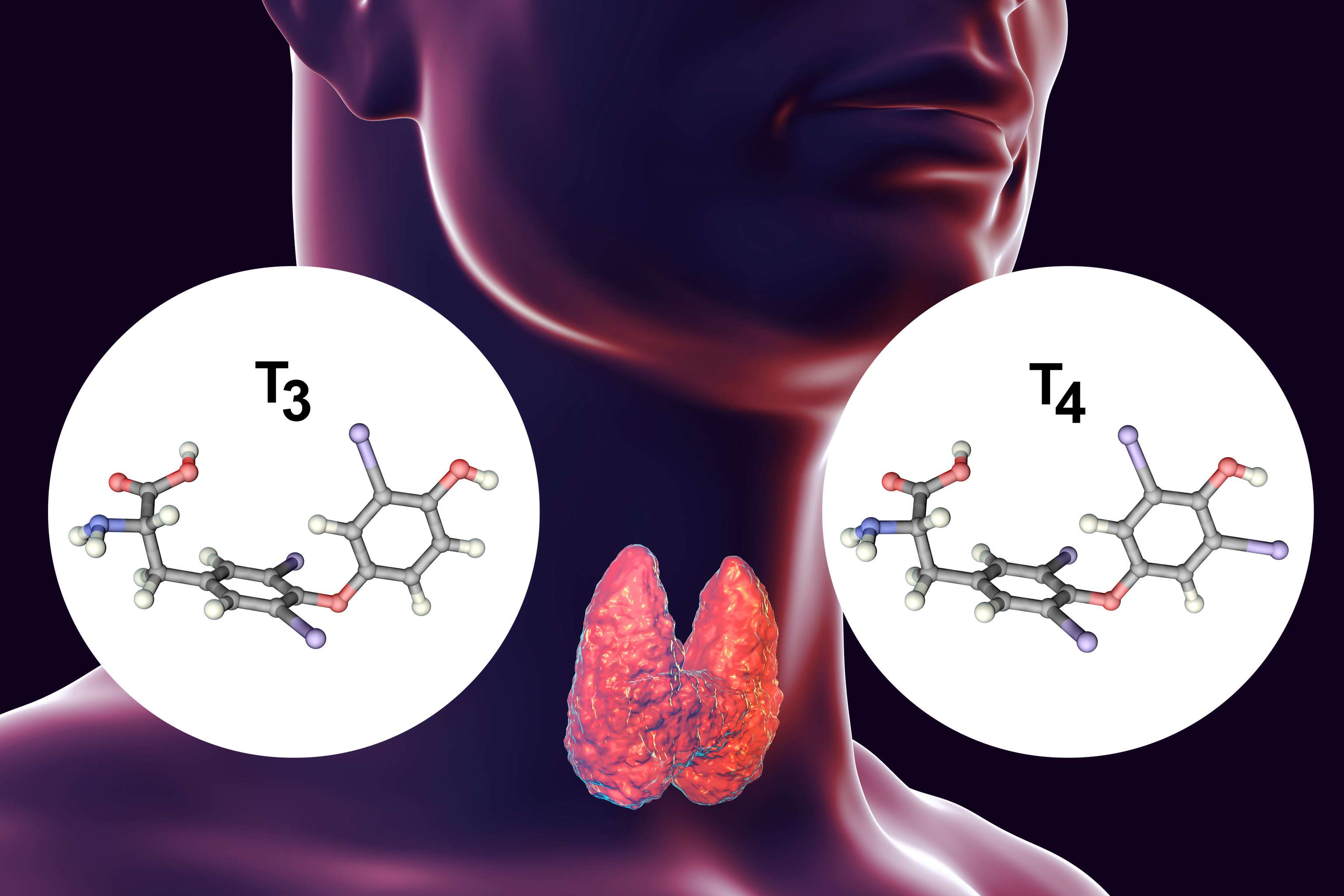Although Hashimoto's thyroiditis is painless, it is not always symptom-free. Although the short phase of passive hyperthyroidism at the beginning of the disease usually does not cause any symptoms and the disease can run for many years without any symptoms at all, noticeable symptoms that may require treatment eventually occur, mainly due to the deficiency of thyroid hormone. However, these do not necessarily occur and generally vary in severity depending on the individual patient. Affected persons with symptoms therefore primarily perceive the hypothyroidism - and do so in a wide variety of individual ways. Symptoms that may indicate Hashimoto's thyroiditis include:
- Tiredness (fatigue) and weakness.
- Listlessness
- Fatigue
- Decreased physical and cognitive performance
- Depressive moods, sadness
- Weight gain (sometimes despite changes in dietary habits)
- Excessive sensitivity to cold
- Irregular menstrual cycles and, as a consequence, possibly reduced fertility
- Constipation (constipation)
- Cool, dry and/or doughy skin
- Disturbances in nail growth
- Hair loss (effluvium)
Since the symptoms of Hashimoto's thyroiditis are very unspecific, can also occur in the course of other diseases and are perceived very individually by those affected, a differential diagnostic clarification and differentiation from other diseases is very important - especially with regard to the choice of further procedure and therapy.
Course of the disease
There are two forms of chronic immune thyroiditis: the hypertrophic form (the "classic Hashimoto's thyroiditis" first described by Hakaru Hashimoto), in which the thyroid gland enlarges over time, is riddled with inflammatory cells, and loses function, and the atrophic form, in which the thyroid gland becomes smaller and smaller over time and atrophies. Both cases usually lead to a deficiency of thyroid hormone, hypothyroidism, in the longer term.
In the initial phase of Hashimoto's thyroiditis, the patient initially experiences a passive, i.e. temporary, hyperthyroidism, which is known as "hashitoxicosis": The inflammation destroys thyroid cells, causing a greater amount of thyroid hormone to be washed into the blood.
Passive and usually asymptomatic hyperthyroidism is in many cases not recognized at all, or often only detected by chance during routine blood tests, since it usually lasts only a few weeks, sometimes one to two months. After that, thyroid function returns to normal and eventually changes to hypothyroidism, often only after years or decades. The time course is very individual.



